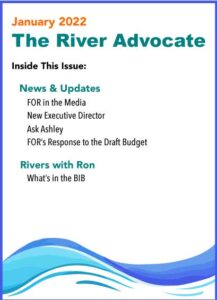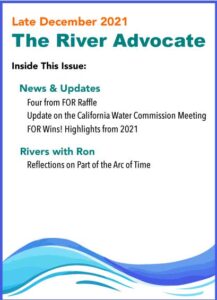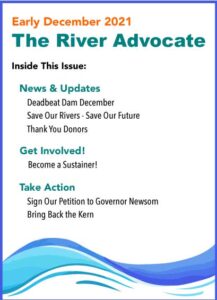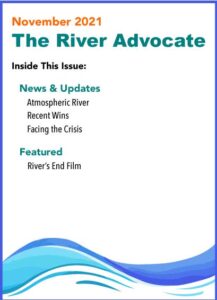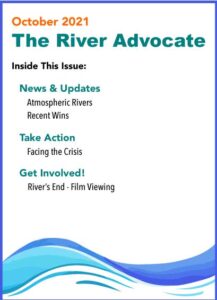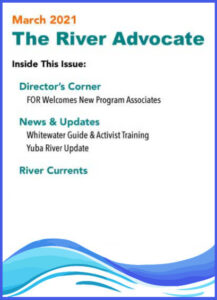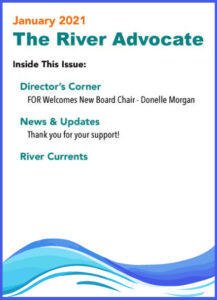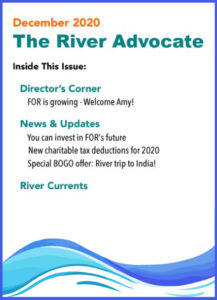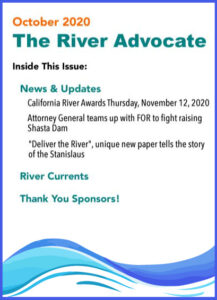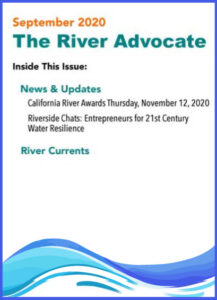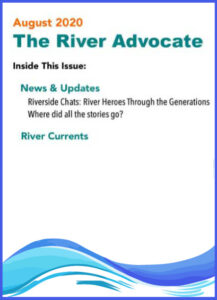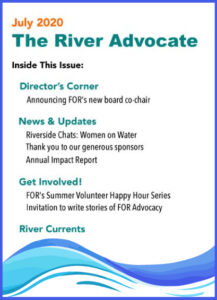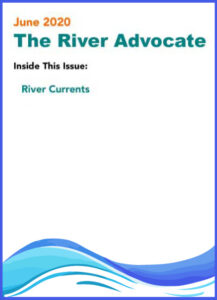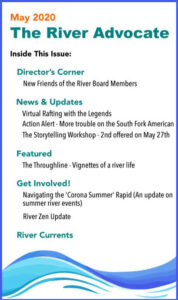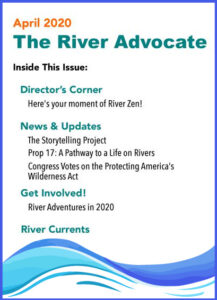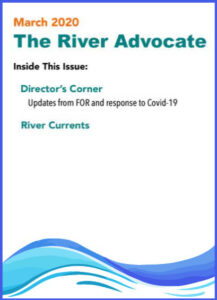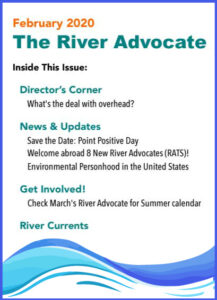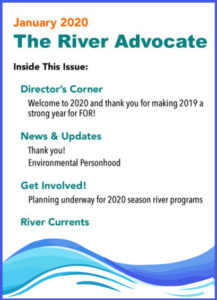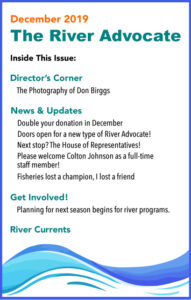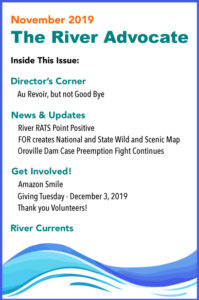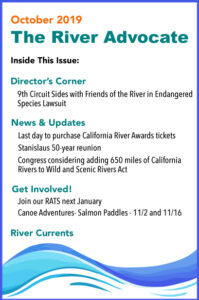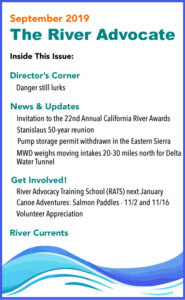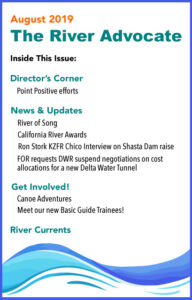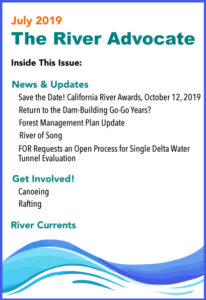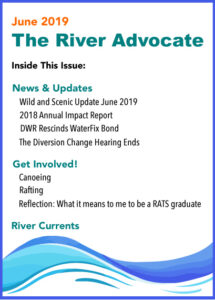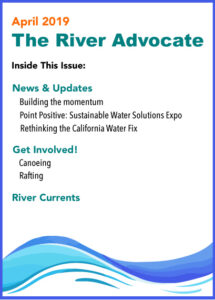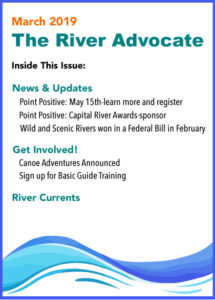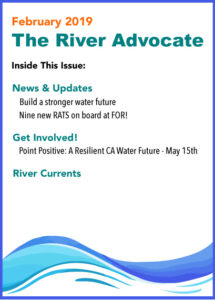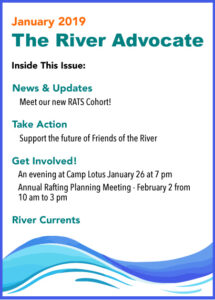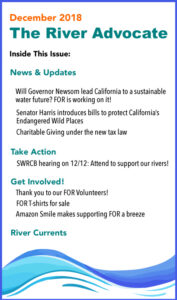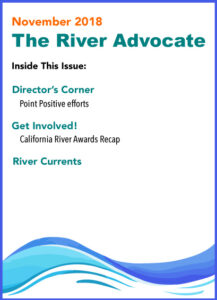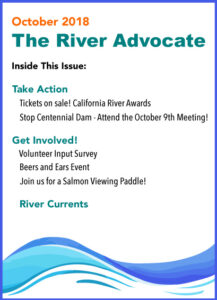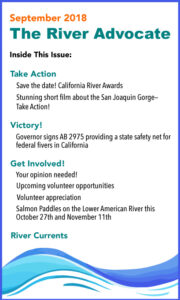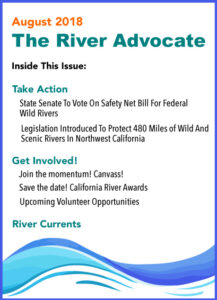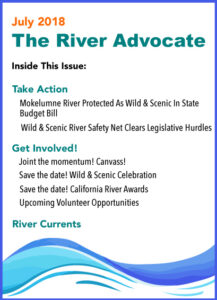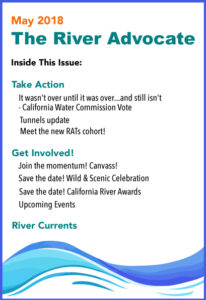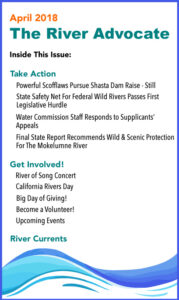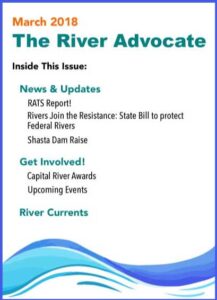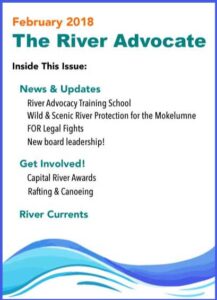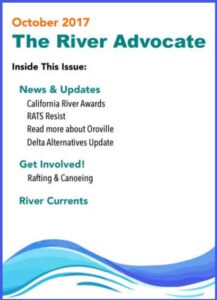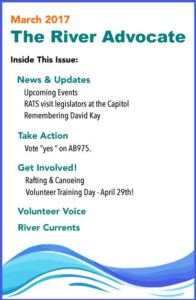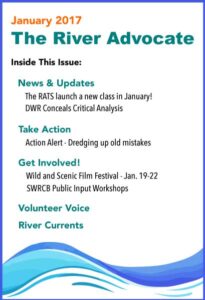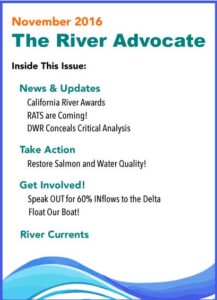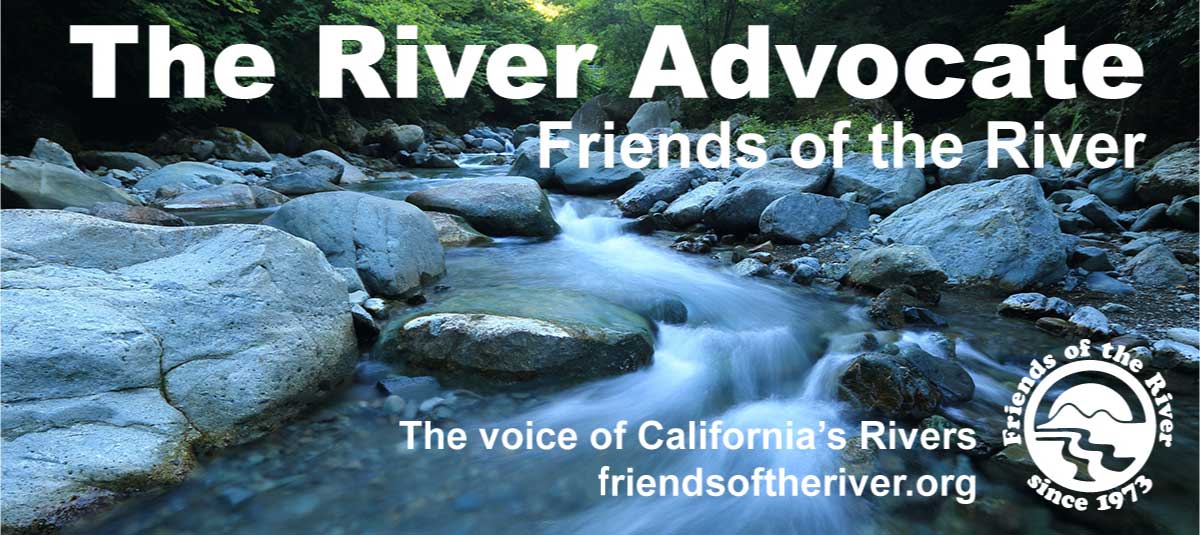
July 2022
The Delta Conveyance Project – An ecological disaster for Northern California rivers
Jann Dorman, Executive Director
On Wednesday, the Department of Water Resources (DWR) released the DRAFT environmental impact report (DEIR) for the Delta Conveyance Project. This started the clock for the 90 day public comment period beginning July 27 to October 27. The document itself is so massive that DWR is delivering thumb drives to stakeholders who may have difficulty downloading from the internet. Concerned stakeholders are already voicing concerns about the short time-line for review. Many environmental non-governmental organizations (NGOs) will be collaborating to review the document to understand 1) the risks this project presents, 2) the potential benefits, and 3) to communicate these findings to the public.
FOR’s primary mission is to protect and restore the rivers of California. It will be from this commitment that FOR will participate in review and comment on the DEIR. Our main concern is the impact this project could have overall on the rivers of Northern California, including the upstream tributaries of the Sacramento and San Joaquin rivers and their associated dams and storage facilities. At the core of the issue, the Delta Conveyance seeks to move MORE water from the rivers of northern California to the State Water Project, which moves it south to customers with cash. There is a complicated calculus in the DEIR as to exactly what and when this water is, wet year water, dry year water, backfill for groundwater, stored water (think Sites reservoir), whether this can be done safely for the public, salinity, sea rise, levees, impact on fish, engineering, impact on Tribes, etc, etc, etc. The scope of issues which warrant review is vast. A virtual army of scientists, policy experts, engineers, politicians, federal and state agency personnel, activists, environmentalists, and individual citizens is forming. FOR will support others on various topics if and when we have expertise. However, our primary concern will be the rivers of California. The next 90 days will be both critical and intense for FOR. Stay tuned for more news on this front.
Reflections and Direction at Mid-Year
Jann Dorman, Executive Director
Hello River Community. It’s mid-summer in Coloma on the South Fork of the American River, on the lands of the Nisenan people. It’s very hot most days, but sitting in the shade of a big tree with one’s feet in the river is one of the great pleasures in life. There is an interpretive sign in our state park which informs us that the place-name for Coloma comes from a Nisenan word which means “beautiful place.” The extraordinary relationship between humans and rivers is as old as human history and just as important today. This “beautiful place” as we all know, became ground zero for the Gold Rush, which soon resulted in the catastrophic destruction of our watersheds and accelerated the genocide of native peoples. With both the beauty and tragedy in mind, I am taking some space to look back on my first six months as executive director for Friends of the River, to make sense of the wide range of activities FOR is engaged in, and describe priorities for the rest of the year.
Friends of the River protects and restores California rivers by influencing public policy and inspiring citizen action. We do this by working across five drivers that impact the health of rivers: hydropower, storage, quality/flow, flood, and protection. I’ve been looking at our policy portfolio by watershed, and how each of these five drivers impacts the watershed. I am a big fan of simple, two-dimensional arrays. They help me see the boundaries of the conceptual landscape and allocate resources when and where they are needed.
As we all know, FOR works closely with other organizations on this landscape. Coordinating resources across the drivers and watersheds is a critical part of the strategy. For those of you who are interested and not scared, I’m sharing the working tool I’ve been using to guide my understanding of how FOR is making a difference. Please realize it’s a work in progress, always changing, not perfect. View Jann’s working tool: Policy Landscape 072622
Where Have We Been?
At FOR we started off the new year and the legislative session by delivering our petition to Governor Newsom, with over 500 signatures, asking to invest in healthy rivers, to address the human right to water, and to incorporate river resilient solutions for climate adaptation. We also set the date for the California River Awards and began the preparation that would continue with great intensity leading up to the event in May.
In January, FOR led an enormous comment-drafting process with other environmental non-profits, and then filed extensive comments on the state Revised Draft Environmental Report and federal Supplemental Environmental Impact Statement (RDEIR/SDEIS) on the proposed Sites Reservoir.
In February, FOR participated in a coalition of nine partner organizations in a wide-ranging draft process and submitted voluminous comments on the proposed Pacheco Dam Draft Environmental Impact Report (DEIR). Through the commenting process, FOR helps to establish a public record to dispute questionable benefits, provide a more accurate description of the significant environmental risks to the watershed, and highlight the fiscal, environmental and social flaws of these proposed surface water storage projects in California.
In March, FOR was deep into legislative advocacy. By illuminating the environmental consequences for rivers, and lending our voice with other organizations to educate legislators, FOR helped to support promising bills, oppose harmful bills, and follow the environmental implications of the many twists and turns of the emerging state budget.

April was totally crazy. FOR has spent over 20 years in mid-town Sacramento offices, where we had accumulated truckloads of old office furniture, over 100 boxes of paper files, a huge library of rare and crucial reference materials, art work, maps, vintage camping equipment, and innumerable keepsakes from days gone by.

We had eight 200-pound, Steelcase desks, untold numbers of battered filing cabinets, a huge coffee mug collection, computers and servers dating back to the dial-up era, pieces of dams, and auction items no one had picked up for decades. Along with our day jobs, which continued with the usual intensity described above, nights and weekends were spent organizing documents and triaging records to our storage facility, responsibly disposing of old furniture and equipment, and curating the keepsakes and art. The ragged shorts worn by Mark DuBois while chained to the rock have been carefully moved to their new home on Bradshaw Road. Stay tuned. We may hold a viewing!
May and June continued with intensity and events unabated. On May 11, we held the California River Awards. Again, I would like to express the deepest appreciation to all who supported, sponsored, donated, and participated. It is your support that makes the great work FOR does possible. The May state budget-revise created great drama throughout the environmental community. FOR continued the usual relentless, detailed, tracking and response to the legislative as well as the administrative and legal processes required to support and oppose the various threats and protections for our California rivers. Also, as you know from our last newsletter, FOR experienced a significant transition, losing Ashley Overhouse, a fantastic staff member, and gaining Ashley Overhouse, a fantastic board member. The recruiting process for Ashley’s replacement is going well, and we will have exciting news very soon.
In looking back on the last six months, I would also like to highlight FOR’s progress in communications. Our communications lead and inspire, build awareness, engage hearts and minds, and motivate effective community and individual action to support and oppose specific projects. Are we where we need to be? No. Is our website frustrating? Yes. However, FOR has significantly expanded our communications reach with streams of timely content for advocacy on Facebook, Instagram, Twitter, YouTube and Podcasting. We have also had excellent success in sharing our point of view in print and video media. Our own Ron Stork appeared on the Fox Weather national digital broadcast network. This was a critical opportunity to tell the story of the insignificant drought mitigation, significant environmental risks and tremendous costs for the proposed Sites Reservoir. Communications will continue to be an important focus for FOR going forward.
Where Are We Going?
We are absolutely going to continue day-in/day-out advocating for healthy rivers across the 5 drivers. We will be supporting resilient, equitable solutions for climate adaptation, and opposing destructive water transfers, dams and reservoirs. We will continue communications and advocacy for the Climate Resilient Water Program. We are also going to use Q3 to focus on some of our operations, such improving the website, reconnecting with volunteers, and organizing our River Program operations.
It’s an exciting time for all of us. There is truly an unprecedented opportunity to make a difference now. If we can save California’s rivers, we can save California. Future generations will find solace and inspiration in its lands and waters, as we have. Thank you for your trust and support. I am counting on and gaining strength from all of you.
Wild & Scenic River Anniversaries
Ron Stork, Senior Policy Staff
 The wild & scenic river systems of the nation and California are one of our country’s and state’s better ideas. Here in California we have quite a wild & scenic river legacy. And yes, Friends of the River was often in the effort to get many of these rivers into the wild and scenic river systems. Of course, we have some fine and diverse rivers in this state to choose from.
The wild & scenic river systems of the nation and California are one of our country’s and state’s better ideas. Here in California we have quite a wild & scenic river legacy. And yes, Friends of the River was often in the effort to get many of these rivers into the wild and scenic river systems. Of course, we have some fine and diverse rivers in this state to choose from.
California’s history begins at the beginning. We have one of the original eight national wild & scenic rivers (the Middle Fork Feather) when the national wild and scenic rivers were formed back in 1968. More were added over time. But we also have a California Wild & Scenic River system formed just five years later — yep, that means that next year both Friends of the River and the California Wild & Scenic Rivers Act both share their golden 50-year anniversary.
But speaking of anniversaries we thought it might be a welcome idea to reflect on the anniversaries of the designations of the wild & scenic rivers as they come up. We’ll try to do that over the next year. So let’s start. Oddly, we don’t have any August anniversaries, but we do have some in July, so here we go.
Dates to Celebrate!
July 22, 1995 – Deer Creek and Mill Creek: Located in the northeast portion of Sacramento Valley, the headwaters of these creeks are not too distant from each other, Deer Creek in the Lassen Nation Forest and Mill Creek in Lassen Volcanic National Park. Assemblyman Byron Sher (D-Palo Alto) and his staff were interested in new additions to the state wild & scenic river system. These large creeks with their deep pools of the famous and threatened over-summering spring run Chinook salmon seemed like likely candidates and had been designated by the legislature as potential additions to the state system (“study” rivers) back in 1993 (AB-653 Sher).
In 1995 though, timber company and landowner resistance, while not always well informed, was effective in the legislature, and the Wild & Scenic Rivers Act could only be amended to prohibit dams on these creeks. Republican Governor Pete Wilson signed the bill into law. Thus, these creeks were protected by California Wild & Scenic Rivers Act but not added to the system (AB-1413).
July 23, 2003 – Gualala and Albion Rivers: Located on the Mendocino County coast, these rivers are some of the smallest wild & scenic rivers in the state (3.5 miles and 3 miles respectively). These rivers were designated because of some ill-considered drought-busting proposals for Southern California and the local reaction to the proposals.
There have always been ideas to get more water to the south state — some outlandish (hauling icebergs from Alaska, for example). Here the idea was to fill water from the estuarine freshwater outfalls of rivers on the Mendocino coast into giant plastic bags and float them down to the south state. Well, outlandish or not, the good county supervisors of Mendocino approached one of their state legislators. She was able to shepherd a bill through the legislature to add the small coastal segments of these rivers to the state system (AB-1168 Patty Berg D-Eureka). California Governor Gray Davis signed the bill into law. Thus ended the bagging and floating proposal for those two rivers.
July 26, 1989 – The East Fork Carson, West Walker, and McCloud Rivers: In 1986 it had been thirteen long years since the creation of the California wild & scenic rivers system. Indeed, in 1982 a fierce counterattack by the timber industry and water agencies had wounded the system and pruned more than 1,300 miles from the state wild & scenic river system. But in 1986 change was possible, so Assemblyman Byron Sher (D-Palo Alto) managed to add a provision to the California Wild & Scenic Rivers Act for creating “study” rivers and directing the now California Natural Resources Agency to review and recommend rivers to the state system. The first two members of the “study river” freshman class were to be the East Fork Carson and West Walker Rivers north of Yosemite National Park. Travelers see these rivers along Highway 395 as they drive by and occasionally are in the dramatic east side of the Sierra Nevada. The third river, the McCloud River, is a fabled trout river now tributary to Shasta Reservoir and tucked away from extensive visitation in the Southern Cascades. Republican Governor signed the bill into law (AB-3101 Sher D-Palo Alto).
The Agency reports came back favorable for all three rivers, and after tussling a little bit with the interstate nature of two of the rivers (the West Walker has a storage dam in California that folks in Nevada partially rely upon) and necessary discussions with local businesses and elected officials, the segments of the East Fork Carson and West Walker Rivers and Leavitt Creek were added to the state wild & scenic rivers system. It had been sixteen years since the last addition to the state system (AB-1200 Sher D-Palo Alto). It was a good deed.
The McCloud River faced stiffer opposition. The legislature was unwilling to face timber industry and wealthy landowner opposition to designation of this river into the state system. So instead, the legislature fashioned a special provision of the California Wild & Scenic Rivers Act that prohibited new dams and reservoirs on a major portion of the McCloud River. It also prohibited agencies of the state from cooperating in the planning and construction of dams and reservoirs that could adversely affect the free-flowing status and wild trout fishery of the protected reach of the McCloud. (AB-1200 Sher D-Palo Alto). Republican Governor George Deukmejian signed the bill, which covered all three rivers.
This 1989 McCloud River statutory language set the stage — thirty years later — for successful litigation by the California Attorney General and Friends of the River et. al. to block the Westlands Water District’s 2018–2019 attempt to prepare an environmental impact report necessary for them to join with the apparently lawless U.S. Bureau of Reclamation in expanding Shasta Reservoir onto the protected reach of the McCloud River. Read more here.
The language of the California Wild & Scenic Rivers Act stiffened the resistance of state agencies against the 2021 Trump Administration’s Bureau of Reclamation’s supplemental EIS (environmental impact statement) to expand the Shasta Reservoir. There Reclamation attempted to roll back their previous conclusion in 2014 and 2015 that the expansion of the reservoir was in conflict with state law — an EIS in which Reclamation apparently took the position that the California Wild & Scenic Rivers Act had no relevance to the federal government. We took the contrary position. Read more here.
The truce around the relevance of the California Wild & Scenic Rivers Act is likely to end when there is a party leadership change in the House of Representatives in 2023 and a big change in the Presidency in 2025.
Consider that fair warning.
For more: For a quick 37-page constantly updated summary of our efforts to create, build, and add members to the state and national wild and scenic rivers in CA.
Honoring the Run4Salmon
Sara Jurrens, Communications Associate

For the seventh year in a row, the Winnemem Wintu Tribe, along with a collective of Indigenous women, activists, and allies spent the month of July in a 300-mile Prayer Journey to restore salmon to the Mount Shasta area. The Run4Salmon started at Mount Shasta and will end July 31, 2022 at the shores of the Pacific Ocean at the San Francisco Bay.
Scientists consider salmon a keystone species, and the Winnemem Wintu Tribe consider them ‘keepers of the water,’ essential to keeping waterways healthy for human life and for all other life that depend on rivers. Fish contribute more nutrients to their local ecosystems than any other source, enough to cause changes in the growth rates of the organisms at the base of the food web. In regards to this year’s Run4Salmon, Chief Caleen Sisk said, “It’s pretty critical this time, because of the drought, and a lot of people don’t have a lot of knowledge about the drought, about water, where their water comes from, or what fish do for us.”
When the Shasta Dam was built in 1945, the Chinook salmon of the Mount Shasta area were blocked from returning to their spawning and rearing grounds in the McCloud River. The loss of the salmon in the Mount Shasta area has adversely affected the ecosystem of the McCloud River, and made a direct negative impact on the Winnemem Wintu Tribe’s way of life. To help correct this grave error, a fishway around the Shasta Dam is proposed by the Winnemem Wintu Tribe for the Chinook salmon to repopulate the McCloud River. Sisk said, “It’s critical people wake up and start thinking in the bigger realm of things, about drought and what we can do about it, instead of just looking at reservoirs and thinking we are in a drought because there isn’t enough water in the reservoir. The mountains are the banks of the water, those are what we have to be concerned about. What we are doing to the mountains.”
“There are a number of dams,” Sisk said, “and we have the Shasta Dam, that blocks the salmon from coming on to the McCloud River, which is where winter-run salmon are from. In the prayer, we are setting down a pathway for those fish to return and we’ve been putting out those prayers to find a passage to be built so the salmon can swim both ways on their own, not truck and haul, no hatchery system. Let them be wild.”
This month’s prayer journey will raise awareness about the damage and current threats to the Winnemem Wintu Tribe’s way of life, the importance of both salmon and clean water for the ecosystem. Yet it also seeks to celebrate resilience and inspire hope in all people about the possibility of ecological balance.
“Every paddle that hits the water is like a fish tail when they jump. Call them back and set the waters.” -Chief Caleen Sisk
Closing the Loop – San Joaquin County application for American River water rights is finally denied
Jann Dorman, Executive Director
On Tuesday, July 19, after 32 years of attempting to gain water rights to the American River, the State Water Resources Control Board (SWRCB) cancelled/denied San Joaquin County’s application. As we described to you last month, the SWRCB Administrative Hearing Office (AHO) held extensive hearings on the application last winter. FOR provided testimony in these hearings, which was instrumental in establishing the administrative case for denial. The resulting AHO recommendation for denial was well presented. However, the decision to deny was not in any way a foregone conclusion. The board listened carefully to San Joaquin County to understand the desires of their agricultural users and cities for more water, all of whose plans to use more surface water and to continue unsustainable use of groundwater might eventually be impacted by the failure to achieve the proposed water right. The Board also heard from the environmental community about the potential impacts to the American River and the Delta.
In the end, the decision was based on the County’s failure to pursue the water right diligently, as required by law and regulation.
FOR has been following this issue since 1990, particularly since one of the ideas in the County’s original application involved a cross-country diversion to the County starting at Salmon Falls on the South Fork. This idea came from 1950s-era proposals to build a large dam capable of impounding a reservoir all the way up to and even beyond the Gold Rush discovery site in Coloma. There have been repeated procedural events over the decades in which FOR has been an effective advocate for the American River and prevented the water rights application from moving forward. The County now has 30 days to ask the Board to revisit its decision, although most observers are confident that the Board will stick by its decision. However, as with most stories, no one actually lives happily ever after. San Joaquin County has the right to reapply for those water rights at any time. We sincerely hope they do not choose to do so. But if they do, FOR will be there.
Volunteers Needed
Are you looking for a way to make a difference for rivers? Do you enjoy volunteering? Would you like to join a really fun team? Friends of the River has some big jobs coming up and could use your help. Over the next few weeks we will be posting project descriptions for several volunteer roles and interviewing candidates. We are seeking the following:
- Editor for publishing 2 editions of Headwaters each year
- Event coordinator for our 50th year celebration in May 2023
- Social media coordinator
- Website migration coordinator
- California River Awards project coordinator
Please email janndorman@friendsoftheriver.org if you are interested in any of these roles and would like to learn more.
River Advocate spacer bar
River Advocate Back Issues
Back Issues of Headwaters Newsletter

